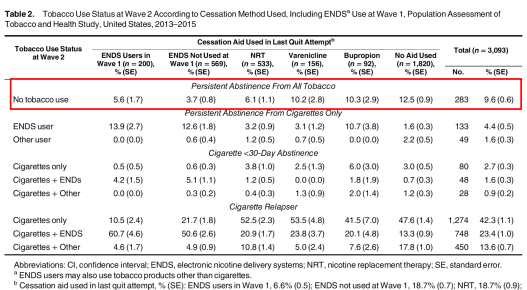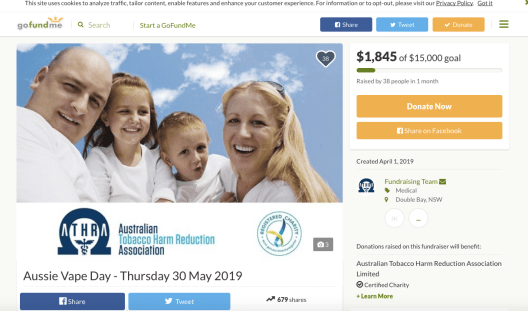Highlights
May 31 is World No Tobacco Day. Australia has much to celebrate, no better captured in two sets of killer facts.
First, Sir Richard Peto’s Oxford University research group has produced estimates of the changes in total and tobacco-caused mortality for a large number of countries across the 65 years 1950-2015. Australia is one country which has seen huge falls (see figure below). In 1970, the risk of a 35 year old man dying by age 69 was 42%. 16% of those deaths would have been caused by smoking.
Forty five years later, the all-cause risk of early death had dropped by two thirds to 15%, while smoking-caused deaths had fallen by four fifths to just 3%. Australia began introducing the first baby steps in the suite of comprehensive tobacco control policies and campaigns in 1973 when the first timidly tepid warnings appeared on cigarette packs.
This is harm reduction writ very large indeed.

Second, as more and more tobacco control policies were legislated and implemented in Australia, and campaign funding became serious, allowing mass-reach of don’t start and quit motivating messages into the whole population, the proportion of people who smoked continued falling, occasionally plateauing as political feet were sometimes removed from the accelerator, but resuming their downward spiral when tobacco control became bipartisan.
Australia has long been at or near the very front of the international pack in reducing smoking. Here are the latest available data for five nations often compared with Australia. The Australian data are from the 2017-18 ABS National Health Survey (see table 9 here)
- Australia (2017-18 ages 18+): 15.1% (includes cigarette smokers plus all exclusive users of other combustible tobacco products)
- USA: (2017 ages 18+) 16.7% (all combustible tobacco product users)
- Canada (2017 ages 12+): 16.2% (cigarettes & Roll Your Own tobacco only)
- New Zealand (2016 ages 15+) 15.7%. (Māori adults 35.3%) (cigarettes & RYO only)
- UK (2017 ages 18+): 15.1% (cigarettes and RYO only)
In summary, of these five nations, only Australia and the USA include all combustible tobacco products in their data on “smoking” prevalence, while other nations only include cigarettes (factory made and hand-rolled). Their “smoking” prevalence figures thus underestimate the true prevalence of “smoking”. Australia and the UK have the same (lowest) smoking prevalence of these nations, although the UK data do not include combustibles other than cigarettes (for example pipes, cigars, shisha and hookah). It is therefore likely that today Australia has the lowest smoking prevalence of these nations in the vanguard of reducing ,smoking.
But wait, there’s more. This week, the Cancer Council Victoria released data on changes in smoking prevalence in Victoria, our second most populous state, between 2015-2018. The main take home findings are that in that state we now have the lowest daily smoking prevalence ever recorded: 10.7% (down from 13.5% in 2015) with falls in the most disadvantaged group down from 16.8% to 13%.
The same study found that less than 2% of smokers & 1% of ex-smokers vape daily. We know from large longitudinal cohort studies that sustained quitting from smoking among people who vape compares unfavourably with other ways of quitting (eg: see table below). The Victorian report concluded that “There was no evidence to suggest an increase in the use of e-cigarettes to aid cessation by Victorians who were attempting to quit across the study period”.

Tobacco control is widely regarded as the poster child of chronic disease control. These data, on radical falls in both smoking and smoking caused deaths , show why.
Lowlights
On the day before WNTD, a triumvirate of three e-cigarette advocacy groups launched “Aussie Vape Day” in a brazen attempt to gatecrash and rain on the parade of WNTD. On April Fools day, 2019 one of these groups, launched a Go Fund Me fundraiser, setting a target of $15,000 to pay for “a dedicated website, a launch event, professionally produced videos, testimonials, social media infographics and mainstream media promotion, a flyer for beginners on how to switch and a handout on the common questions people ask.”
ATHRA’s chairman Colin Mendelsohn, opened the donations with $500 and 30 days later, another $1345 was donated by just 37 others, with 679 sharing the Go Fund Me link, apparently with very little effect. Their $1845 fell 88% short of their modest target.

By 8pm at the end of the big day, the Twitter hashtag #AussieVapeDay had a whole 9 tweets, with collectively 4 comments, 16 retweets and 25 likes, not exactly the stuff of a national Twitter trend.
The launch event, held on a cold, windy Thursday in a Sydney suburban park looked like Groundhog Day of recent poorly attended ecig seminars held in rooms in the Victorian and NSW parliament buildings. (see photos below).

Aussie Vape Day launch

Next year will be bigger … !!


Melbourne and Sydney seminars, 2019
The health communications company, Palin Communications, issued a press release on the big day. A cover letter to recipients stated:

Australian health and medical which have expressed scepticism and regulatory caution about ecigarettes are in lockstep with a very long list of global and international expert agencies (see here). And as for “Smoking rates fall in countries that embrace vaping and they are sure not falling here in Australia”, here was my response (the link was to the Victorian report above).

Philip Morris International
Some bright spark at PMI decided it would be just so apposite and witty to rename World No Tobacco Day as World No Smoking Day. I’ve written several long pieces on this blog here, here and here and elsewhere about awkward questions that we all need to ask about that company’s publicly stated ambition to move all its smokers over to its heat-not-burn product. Critically, while it’s been running its global “unsmoke” campaign, its cigarettes have continued to sell well, with sales of brands like Marlboro recently increasing.


Hi Simon,
As you know, Philip Morris’ IQOS is all about helping desperate smokers quit. That’s pretty apparent from glancing at the photos from this Reuters investigation into PMI’s use of social media influencers online:
https://www.reuters.com/article/us-philipmorris-ecigs-instagram-exclusiv/exclusive-philip-morris-suspends-social-media-campaign-after-reuters-exposes-young-influencers-idUSKCN1SH02K
In April 2019, FDA approved IQOS for sale in the US as a “new tobacco product”, under section 910 of the Family Smoking Prevention and Tobacco Control Act.
https://www.fda.gov/news-events/press-announcements/fda-permits-sale-iqos-tobacco-heating-system-through-premarket-tobacco-product-application-pathway
This required the FDA to find that the marketing of the product is appropriate for the protection of public health, taking account of “the risks and benefits to the population as a whole, including users and non-users of the product” (s 910(c)(4). This includes youth.
FDA concluded that “Available data, while limited, also indicate that few non-tobacco users would be likely to choose to start using IQOS, including youth.”
FDA must have naively thought that Philip Morris would behave. After it got caught, Philip Morris suspended its advertising campaign. But if it wasn’t doing anything inappropriate, why suspend it?
My money’s on Alina Tapilina. Maybe she could help ATHRA drum up a crowd.
Best regards,
Roger
LikeLike